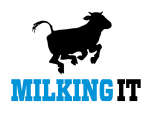In the US today, 96% of dairy farms are family operations, with more than 87% of those considered small family farms, made up of both family members as well as hired help. That hired help predominantly comes in the form of migrant workers - approximately 73% of non-owner farm and ranch employers in the nation.
Currently farmers are facing a massive labour shortage, and that impact was felt before the Covid-19 pandemic changed the face of nearly every industry in the world.
This immigrant labour force also helps American consumers by helping to keep the price of dairy products low. According to a study by the Center for North American Studies, without migrant labour within the dairy industry, retail milk prices would go up as much as 90%.


















